-
 Bitcoin
Bitcoin $105,555.7475
0.20% -
 Ethereum
Ethereum $2,532.6656
-0.81% -
 Tether USDt
Tether USDt $1.0005
0.01% -
 XRP
XRP $2.1571
-0.52% -
 BNB
BNB $648.9514
-0.39% -
 Solana
Solana $145.9230
-0.71% -
 USDC
USDC $1.0000
0.01% -
 Dogecoin
Dogecoin $0.1781
-0.19% -
 TRON
TRON $0.2711
0.00% -
 Cardano
Cardano $0.6295
-1.35% -
 Hyperliquid
Hyperliquid $40.1185
-4.00% -
 Sui
Sui $2.9945
-1.46% -
 Chainlink
Chainlink $13.2611
-0.45% -
 Bitcoin Cash
Bitcoin Cash $437.8737
-1.10% -
 UNUS SED LEO
UNUS SED LEO $9.2477
2.60% -
 Stellar
Stellar $0.2581
-0.94% -
 Avalanche
Avalanche $19.0292
-1.82% -
 Toncoin
Toncoin $2.9690
-1.78% -
 Shiba Inu
Shiba Inu $0.0...01210
-0.30% -
 Litecoin
Litecoin $85.9920
-0.52% -
 Hedera
Hedera $0.1542
-3.16% -
 Polkadot
Polkadot $3.7934
-0.70% -
 Ethena USDe
Ethena USDe $1.0003
-0.02% -
 Monero
Monero $315.4764
1.38% -
 Dai
Dai $1.0000
0.01% -
 Bitget Token
Bitget Token $4.5241
-0.74% -
 Pepe
Pepe $0.0...01112
-0.79% -
 Uniswap
Uniswap $7.3398
-2.41% -
 Pi
Pi $0.6167
5.70% -
 Aave
Aave $276.2851
-3.68%
What are the offline generation methods for wallet addresses?
Offline wallet address generation enhances cryptocurrency security by preventing private key exposure to online threats.
Jun 14, 2025 at 10:56 pm
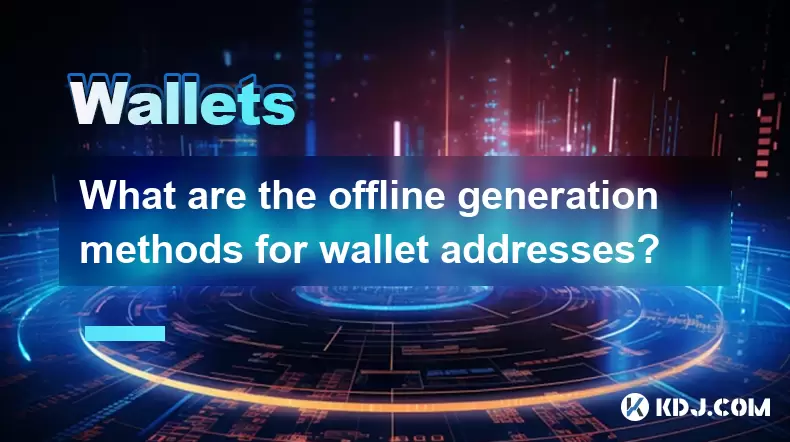
Understanding Offline Wallet Address Generation
Generating wallet addresses offline is a critical security measure for cryptocurrency users. By creating a wallet address without an internet connection, the risk of exposing private keys or other sensitive information to potential attackers is significantly reduced. Offline generation methods are often referred to as "cold storage" techniques and are widely used by individuals who prioritize the safety of their digital assets.
Why Use Offline Methods?
The primary reason for using offline wallet address generation is to avoid any exposure to online threats such as phishing attacks, malware, and hacking attempts. When a wallet is created online, there's always a chance that the device could be compromised, leading to theft of private keys. Offline generation ensures that no part of the key creation process touches the internet, making it one of the most secure ways to store cryptocurrency.
Common Tools for Offline Wallet Creation
Several tools and software options allow users to generate wallet addresses in an offline environment. These include:
- Bitcoin Core (Full Node): Running a full node like Bitcoin Core allows you to generate addresses after syncing with the blockchain. Once synced, it can be used offline.
- Electrum (Offline Mode): Electrum supports offline wallet creation by generating private keys and public addresses on an air-gapped machine.
- Armory: This desktop wallet offers advanced features including cold storage capabilities through offline address generation.
- Paper Wallets: Using services like BitAddress.org, users can download the HTML file and generate paper wallets completely offline.
- Hardware Wallets: Devices like Ledger or Trezor create wallet addresses offline during setup and provide additional layers of security.
Each of these tools requires careful handling to ensure that no step introduces vulnerabilities.
Step-by-Step Process Using BitAddress.org
BitAddress.org is one of the most popular tools for generating paper wallets offline. Here’s how to use it securely:
- Download the BitAddress.org HTML file on a trusted computer while connected to the internet.
- Disconnect the computer from the internet before opening the file.
- Move the mouse randomly across the screen to generate entropy for cryptographic randomness.
- Review the generated Bitcoin address and corresponding private key.
- Print the paper wallet or save it in a secure, offline format.
- Store the printed copy in a safe location away from potential physical damage or unauthorized access.
This method is simple yet effective when performed correctly and in a secure environment.
Using Electrum in Offline Mode
Electrum is another powerful tool that supports offline wallet generation. The steps to create a wallet offline are as follows:
- Install Electrum on an air-gapped computer using a USB drive or other offline transfer method.
- Launch Electrum and select "Create a new wallet."
- Choose "Standard wallet" and then opt for "I want to create a seed phrase."
- Save the mnemonic seed in a secure place, preferably written down and stored physically.
- Confirm the seed words and proceed to generate the wallet.
- Copy the receiving address to use for incoming transactions.
This method ensures that private keys never leave the offline environment, offering robust protection against online threats.
Best Practices for Secure Offline Wallet Generation
To maximize security when generating wallet addresses offline, consider the following best practices:
- Use a clean, virus-free computer dedicated solely to offline wallet creation.
- Ensure that all software used is downloaded from official sources and verified for integrity.
- Avoid using devices that have previously been exposed to untrusted networks.
- Generate multiple backups of your wallet information and store them in separate secure locations.
- Periodically verify the integrity of your offline tools and update them if necessary.
Following these guidelines helps maintain the highest level of security for your cryptocurrency holdings.
Frequently Asked Questions
Q: Can I reuse an offline-generated wallet address?
A: While technically possible, reusing wallet addresses is not recommended due to privacy concerns. Each transaction associated with an address becomes publicly visible on the blockchain.
Q: What should I do if my offline wallet gets damaged or lost?
A: If you lose access to your wallet but still have the private key or seed phrase, you can restore the wallet using compatible software or hardware wallets.
Q: Is it safe to generate a wallet address using a mobile app offline?
A: It depends on the app. Some mobile wallets support offline address generation, but smartphones are generally more vulnerable to compromise than dedicated offline computers.
Q: How do I verify the authenticity of offline wallet software?
A: Always download wallet software from official websites and verify checksums or cryptographic signatures provided by the developers.
Disclaimer:info@kdj.com
The information provided is not trading advice. kdj.com does not assume any responsibility for any investments made based on the information provided in this article. Cryptocurrencies are highly volatile and it is highly recommended that you invest with caution after thorough research!
If you believe that the content used on this website infringes your copyright, please contact us immediately (info@kdj.com) and we will delete it promptly.
- Shiba Inu (SHIB) Price Prediction 2030: Investing $1000 Today Could Generate Life-Changing Returns
- 2025-06-15 12:25:11
- Remittix Could Be a Turning Point for Investors as Its RTX Crypto Presale Continues to Headline in Q2
- 2025-06-15 12:25:11
- Top 3 Memecoins to Watch in May
- 2025-06-15 12:20:12
- Dawgz AI (DAGZ): The Next Breakout Meme Coin?
- 2025-06-15 12:20:12
- Bitcoin and Ether ETFs Keep Momentum With $191 Million Combined Inflows
- 2025-06-15 12:15:12
- The $11.6 Trillion Investing Titan BlackRock Has Filed to Tokenize Shares of Its $150 Billion Money Market Fund
- 2025-06-15 12:15:12
Related knowledge
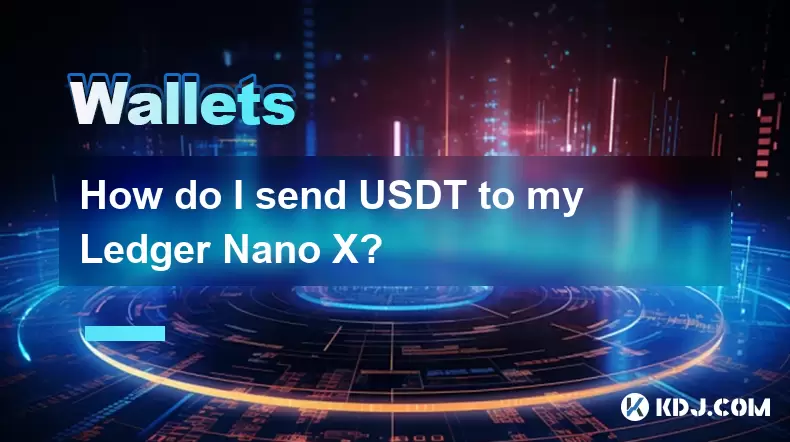
How do I send USDT to my Ledger Nano X?
Jun 15,2025 at 06:28am
What is USDT and Why Use Ledger Nano X?USDT, also known as Tether, is one of the most widely used stablecoins in the cryptocurrency ecosystem. It operates on various blockchain networks such as Ethereum (ERC-20), Tron (TRC-20), and others, offering users a digital asset pegged 1:1 to the US dollar. When it comes to storing USDT securely, hardware wallet...
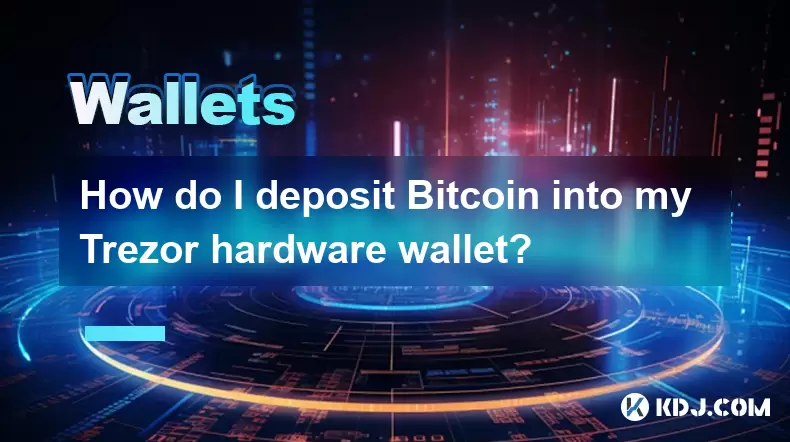
How do I deposit Bitcoin into my Trezor hardware wallet?
Jun 14,2025 at 12:29pm
What is a Trezor Hardware Wallet?A Trezor hardware wallet is a secure device designed to store cryptocurrencies offline, protecting them from online threats. Unlike software wallets, which are vulnerable to hacking and malware, Trezor stores private keys on the physical device itself. This ensures that transactions can only be approved by physically int...
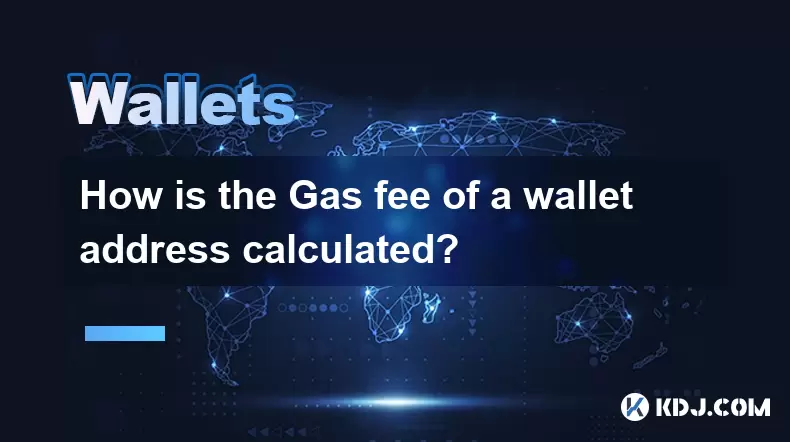
How is the Gas fee of a wallet address calculated?
Jun 14,2025 at 07:57pm
Understanding the Basics of Gas Fees in Blockchain TransactionsIn the cryptocurrency ecosystem, particularly within Ethereum-based networks, a Gas fee is an essential component of executing transactions or smart contract operations. The Gas fee serves as compensation for miners or validators who process and confirm transactions on the blockchain. It is ...
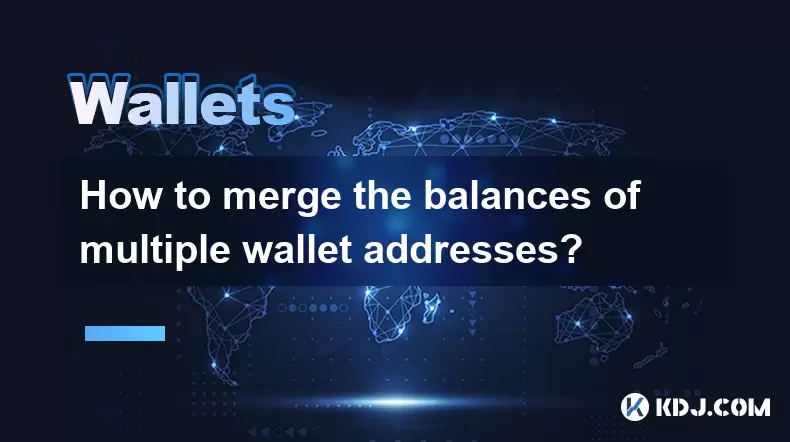
How to merge the balances of multiple wallet addresses?
Jun 13,2025 at 06:21pm
Understanding the Concept of Merging Wallet BalancesMerging the balances of multiple wallet addresses involves consolidating funds from different cryptocurrency wallets into a single address or account. This process is commonly undertaken by users who manage several wallets for security, diversification, or organizational purposes. Merging balances can ...
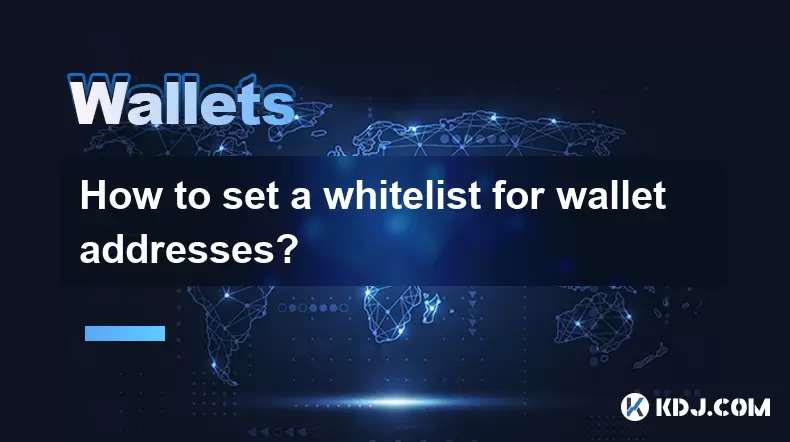
How to set a whitelist for wallet addresses?
Jun 15,2025 at 03:14am
Understanding the Concept of a Whitelist in BlockchainIn the realm of blockchain technology, a whitelist refers to a predefined list of approved entities—in this case, wallet addresses—that are granted access or permissions within a system. This mechanism is commonly used during token sales (ICOs/IDO), NFT minting events, and smart contract interactions...
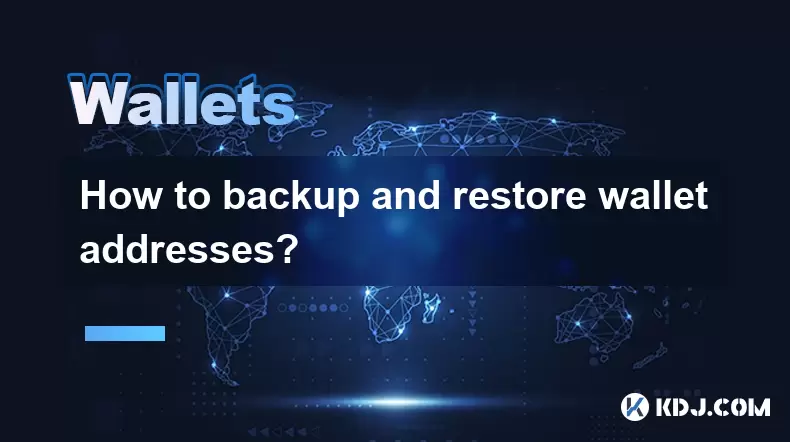
How to backup and restore wallet addresses?
Jun 14,2025 at 03:21pm
Understanding Wallet Addresses in CryptocurrencyIn the world of cryptocurrency, a wallet address is a unique identifier that allows users to send and receive digital assets. It functions similarly to an email address or bank account number. Each wallet address is associated with a private key, which grants access to the funds stored at that address. Los...

How do I send USDT to my Ledger Nano X?
Jun 15,2025 at 06:28am
What is USDT and Why Use Ledger Nano X?USDT, also known as Tether, is one of the most widely used stablecoins in the cryptocurrency ecosystem. It operates on various blockchain networks such as Ethereum (ERC-20), Tron (TRC-20), and others, offering users a digital asset pegged 1:1 to the US dollar. When it comes to storing USDT securely, hardware wallet...

How do I deposit Bitcoin into my Trezor hardware wallet?
Jun 14,2025 at 12:29pm
What is a Trezor Hardware Wallet?A Trezor hardware wallet is a secure device designed to store cryptocurrencies offline, protecting them from online threats. Unlike software wallets, which are vulnerable to hacking and malware, Trezor stores private keys on the physical device itself. This ensures that transactions can only be approved by physically int...

How is the Gas fee of a wallet address calculated?
Jun 14,2025 at 07:57pm
Understanding the Basics of Gas Fees in Blockchain TransactionsIn the cryptocurrency ecosystem, particularly within Ethereum-based networks, a Gas fee is an essential component of executing transactions or smart contract operations. The Gas fee serves as compensation for miners or validators who process and confirm transactions on the blockchain. It is ...

How to merge the balances of multiple wallet addresses?
Jun 13,2025 at 06:21pm
Understanding the Concept of Merging Wallet BalancesMerging the balances of multiple wallet addresses involves consolidating funds from different cryptocurrency wallets into a single address or account. This process is commonly undertaken by users who manage several wallets for security, diversification, or organizational purposes. Merging balances can ...

How to set a whitelist for wallet addresses?
Jun 15,2025 at 03:14am
Understanding the Concept of a Whitelist in BlockchainIn the realm of blockchain technology, a whitelist refers to a predefined list of approved entities—in this case, wallet addresses—that are granted access or permissions within a system. This mechanism is commonly used during token sales (ICOs/IDO), NFT minting events, and smart contract interactions...

How to backup and restore wallet addresses?
Jun 14,2025 at 03:21pm
Understanding Wallet Addresses in CryptocurrencyIn the world of cryptocurrency, a wallet address is a unique identifier that allows users to send and receive digital assets. It functions similarly to an email address or bank account number. Each wallet address is associated with a private key, which grants access to the funds stored at that address. Los...
See all articles

























































































